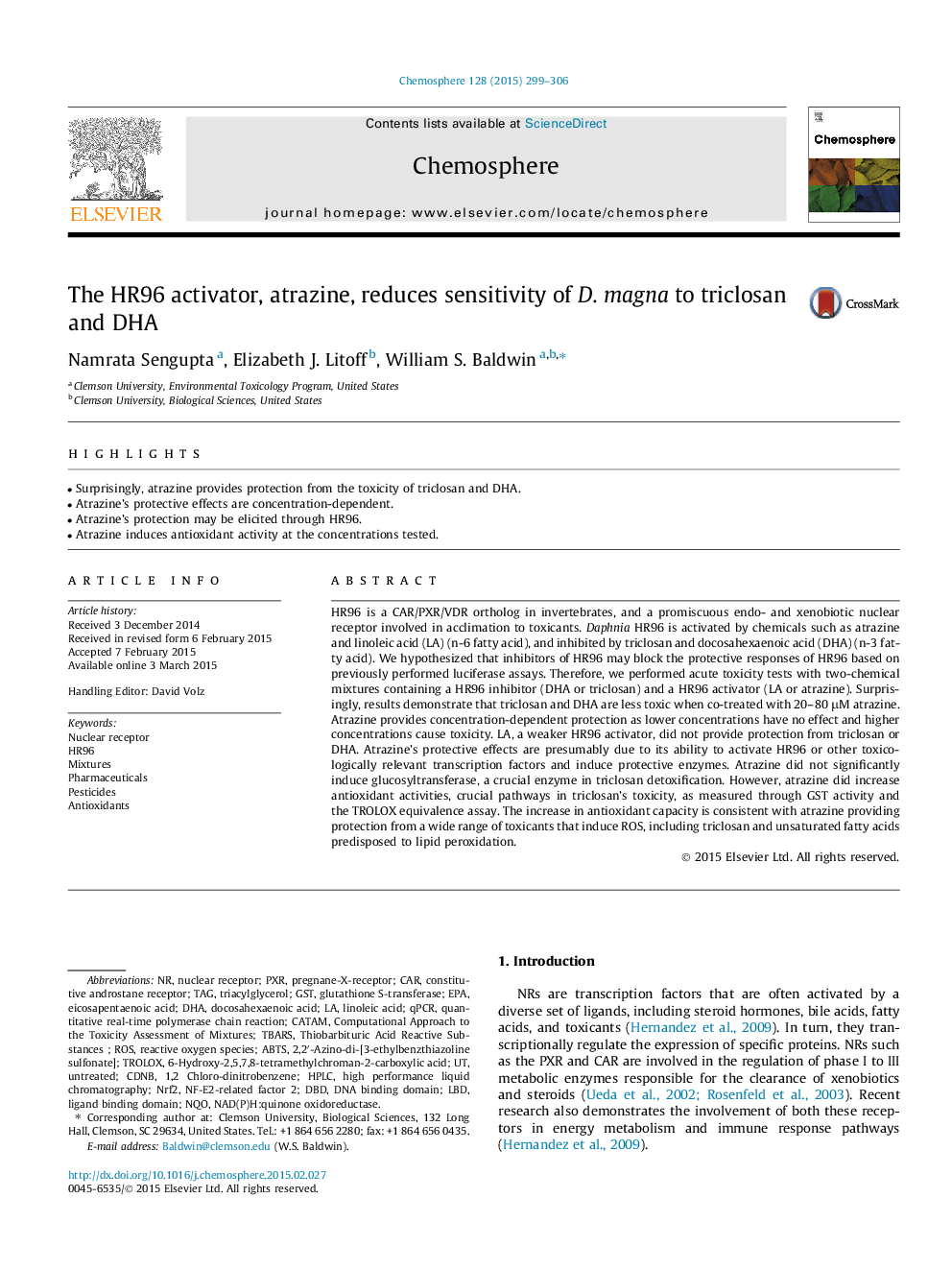| Article ID | Journal | Published Year | Pages | File Type |
|---|---|---|---|---|
| 4408503 | Chemosphere | 2015 | 8 Pages |
•Surprisingly, atrazine provides protection from the toxicity of triclosan and DHA.•Atrazine’s protective effects are concentration-dependent.•Atrazine’s protection may be elicited through HR96.•Atrazine induces antioxidant activity at the concentrations tested.
HR96 is a CAR/PXR/VDR ortholog in invertebrates, and a promiscuous endo- and xenobiotic nuclear receptor involved in acclimation to toxicants. Daphnia HR96 is activated by chemicals such as atrazine and linoleic acid (LA) (n-6 fatty acid), and inhibited by triclosan and docosahexaenoic acid (DHA) (n-3 fatty acid). We hypothesized that inhibitors of HR96 may block the protective responses of HR96 based on previously performed luciferase assays. Therefore, we performed acute toxicity tests with two-chemical mixtures containing a HR96 inhibitor (DHA or triclosan) and a HR96 activator (LA or atrazine). Surprisingly, results demonstrate that triclosan and DHA are less toxic when co-treated with 20–80 μM atrazine. Atrazine provides concentration-dependent protection as lower concentrations have no effect and higher concentrations cause toxicity. LA, a weaker HR96 activator, did not provide protection from triclosan or DHA. Atrazine’s protective effects are presumably due to its ability to activate HR96 or other toxicologically relevant transcription factors and induce protective enzymes. Atrazine did not significantly induce glucosyltransferase, a crucial enzyme in triclosan detoxification. However, atrazine did increase antioxidant activities, crucial pathways in triclosan’s toxicity, as measured through GST activity and the TROLOX equivalence assay. The increase in antioxidant capacity is consistent with atrazine providing protection from a wide range of toxicants that induce ROS, including triclosan and unsaturated fatty acids predisposed to lipid peroxidation.
